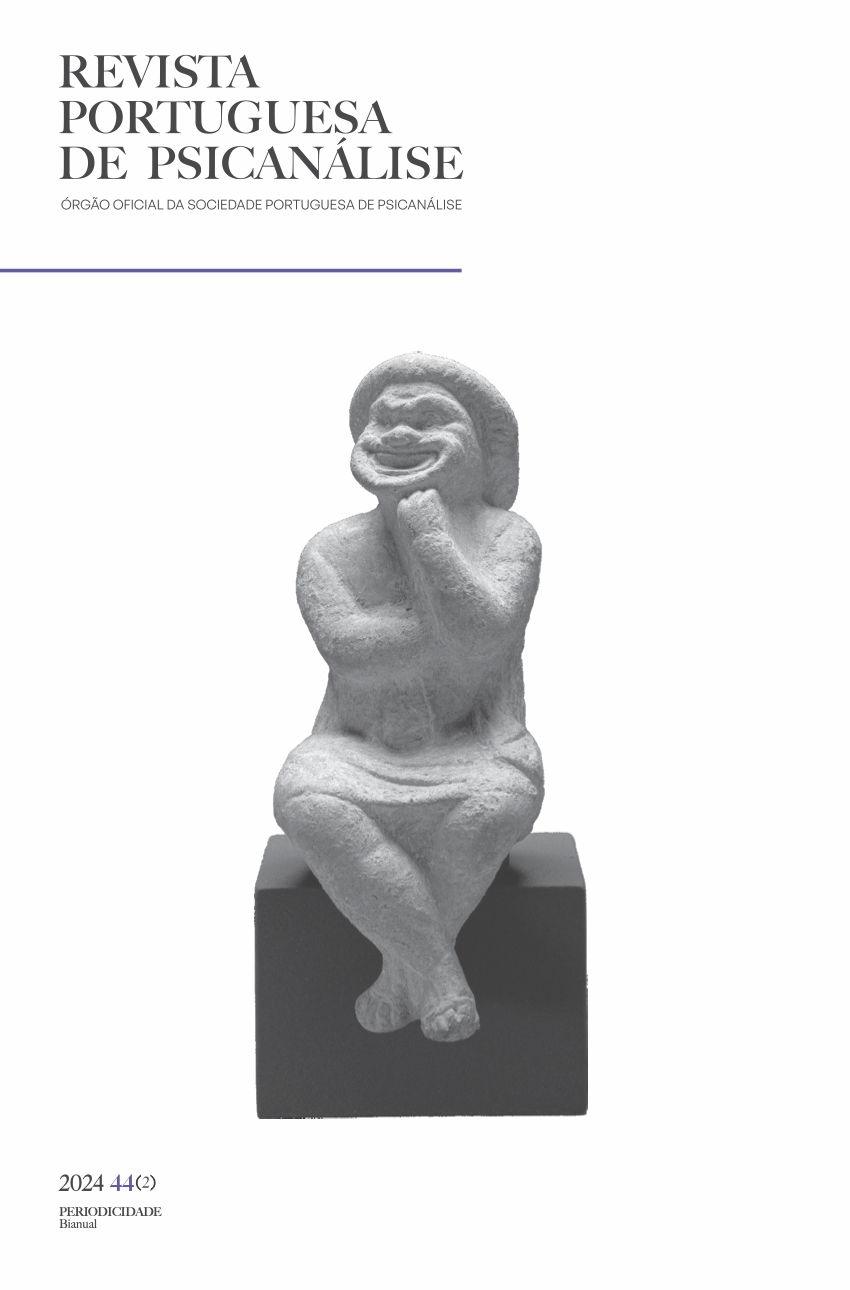Quem é o Analista que Sonha o Paciente e Quem é o Supervisor Que Compreende o Sonho: O Terceiro em Supervisão

Resumo
Neste artigo, procura-se explorar o desenvolvimento em paralelo das ideias acerca da supervisão em Psicanálise e a emergência do conceito de terceiro analítico. Embora este conceito só tenha assumido uma referência concreta nos trabalhos de Grotstein (1979, 2000) e de Ogden (1994), ele já estaria presente na mente e no trabalho clínico de vários psicanalistas, como se procura demonstrar através da exploração de vários triângulos psicanalíticos.
Salienta-se a importância do conceito de processo paralelo na supervisão, processo inconsciente que leva a que seja reproduzida na situação de supervisão a situação analítica, possibilitando ao supervisor identificar os aspetos que ainda não estão compreendidos pelo supervisando. Desse modo, o supervisor tem de ser quem sonha o sonho ainda não sonhado pelo supervisando, para que este por sua vez possa ajudar o paciente a sonhar.
Palavras-chave
supervisão, terceiro analítico, triângulos psicanalíticos, processo paralelo, história da psicanálise
Biografia Autor
Guilherme Canta
Psicólogo Clínico e Psicoterapeuta, Membro Candidato da Sociedade Portuguesa de Psicanálise. Serviço de Psicologia Clínica e Hospital de Dia do Hospital Júlio de Matos – Unidade Local de Saúde São José e Consultório Privado, Lisboa.
Referências
- Anzieu, D. (1989). Beckett and Bion. International Review of Psycho-Analysis, 16, 163–169.
- Baranger, M. & Baranger, W. (2009). The Work of Confluence – Listening and Interpreting in the Psychoanalytic Field. Karnac Books & International Psychoanalytical Association (IPA).
- Bléandonu, G. (1993). Bion, A Vida e a Obra – 1897-1979. Imago.
- Coelho Junior, N. E. (2015). Figuras da Terceiridade na Psicanálise Contemporânea: Suas Origens e seus Destinos. Cadernos de Psicanálise Rio de Janeiro, 37(32), 175-195. http://pepsic.bvsalud.org/scielo.php?script=sci_arttext&pid=S1413-62952015000100010&lng=pt&tlng=pt
- Coelho Junior, N. E. (2016). The Origins and Destinies of the Idea of Thirdness in Contemporary Psychoanalysis. The International Journal of Psychoanalysis, 97, 1105–1127.
- Ferro, A. & Basile, R. (Eds.) (2009). The Analytic Field – A Clinical Concept. Karnac Books & The European Federation for Psychoanalytic Psychotherapy (EFPP).
- Freud, S. (1955). Analysis of a Phobia in a Five-year-Old Boy. Em S. Freud, The Standard Edition of the Complete Psychological Works of Sigmund Freud, vol. x (pp.1–149). The Hogarth Press. (Original publicado em 1909.)
- Green, A. (2004). Thirdness and Psychoanalytic Concepts. The Psychoanalytic Quarterly, LXXIII(1), 99–135.
- Green, A. (2005). Key Ideas for a Contemporary Psychoanalysis – Misrecognition and Recognition of the Unconscious. Routledge.
- Grotstein, J. S. (1979). Who is the Dreamer Who Dreams the Dream and Who is the Dreamer Who Understands It. Contemporary Psychoanalysis, 15(1), 110–169.
- Grotstein, J. S. (1990). The “Black Hole” as the Basic Psychotic Experience: Some Newer Psychoanalytic and Neuroscience Perspectives on Psychosis. Em A.-L. Silver & M. B. Cantor (Eds.), Psychoanalysis and Severe Emotional Illness (pp. 29–46). The Guilford Press.
- Grotstein, J. S. (2000). Who is the Dreamer Who Dreams the Dream – A Study of Psychic Presences. Routledge.
- Herman, W. E. & Fair-Schulz, A. (2018). The Psychological Odyssey of 1909: Carl Gustav Jung’s Pivotal Encounter with Sigmund Freud During Their Journey to America. Swiss American Historical Society Review, 54(2), 1–26.
- Jones, E. (1989). A Vida e a Obra de Sigmund Freud – Volume 2: A Maturidade (1901-1919). Imago. (Original publicado em 1955.)
- Jung, C. G. (1950). The Tavistock Lectures. Bollingen Series XX – The Collected Works of C. G. Jung – Volume 18 – The Symbolic Life. Princeton University Press. (Original publicado em 1935.)
- Kernberg, O. F. (2010). Psychoanalytic Supervision: The Supervisor’s Task. The Psychoanalytic Quarterly, LXXIX(3), 603–627.
- Kernberg, O. F. (2019). Reflections on Supervision. The American Journal of Psychoanalysis, 79(3), 265–283.
- Kwawer, J. S. (2019). The interpersonal Legacy of Chestnut Lodge. Contemporary Psychoanalysis, 55(1–2), 86–98.
- Meigs, K. (2017). The Failure of Clara Thompson’s Ferenczian (Proxy) Analysis of Harry Stack Sullivan. The American Journal of Psychoanalysis, 77(3), 1–19.
- Ogden, T. H. (1994). Subjects of Analysis. Karnac Books.
- Ogden, T. H. (2009). On Psychoanalytic Supervision. Em Rediscovering Psychoanalysis – Thinking and Dreaming, Learning and Forgetting (pp. 31–49). Routledge.
- Pereira, D. R. & Coelho Junior, D. R. (2022). Intersubjetividade no Pensamento Clínico de Harold Searles: Ressonâncias Contemporâneas. Revista Latinoamericana de Psicopatologia Fundamental, 25(1), 43–65. https://doi.org/10.1590/1415-4714.2022v25n1p43.3
- Petratos, D. B. (1990). The European Teachers of Dr. Frieda Fromm-Reichmann. Em A.-L. Silver & M. B. Cantor (Eds.). Psychoanalysis and Severe Emotional Illness (pp. 152–166). The Guilford Press.
- Searles, H. F. (1955). The Informational Value of the Supervisor’s Emotional Experiences. Psychiatry, 18(2), 135–146.
- Silver, A.-L. (1993). Countertransference, Ferenczi, and Washington, DC. Journal of the American Academy of Psychoanalysis, 21(4), 637–654.
- Silver, A.-L. & Cantor, M. B. (Eds.) (1990). Psychoanalysis and Severe Emotional Illness. The Guilford Press.
- Simon, B. (1988). The Imaginary Twins: The Case of Beckett and Bion. The International Review of Psycho-Analysis, 15, 331–352.
- Vollmer Filho, G. & Bernardi, R. (1996). As Funções Múltiplas do Supervisor, os seus Relacionamentos com o Supervisionado, o Analista do Supervisionado, o Paciente, o Quadro de Referência Teórico e a Instituição de Treinamento. Revista de Psicanálise da Sociedade Psicanalítica de Porto Alegre, III(2), 285–293.
- Watkins Jr., C. E. (2018). The Supervisee’s Internal Supervisor Representations: Their Role in Stimulating Psychotherapist Development. International Journal of Psychotherapy, 22(3), 63–73.
- Waugaman, R. C. (2015). Searles’s Discovery of the Parallel Process in Supervision. Psychiatry – Interpersonal and Biological Processes, 78(3), 225–230.
- Zaslavsky, J., Nunes, M. L. T., & Eizirik, C. L. (2003). A Supervisão Psicanalitica: Revisão e uma Proposta de Sistematização. Revista de Psiquiatria doRio Grande do Sul, 25(2), 297–309.